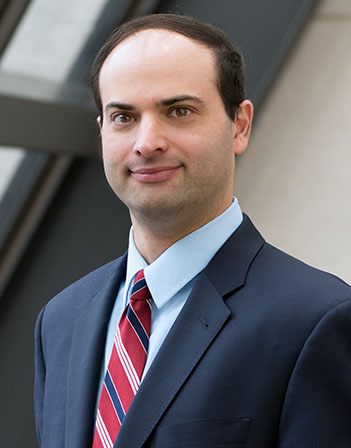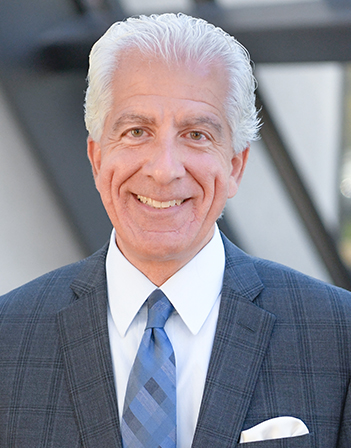
Article
School Sick Leave Law Greatly Expanded
Client Alert
On Monday, July 3, 2023, Governor Murphy signed into law P.L.2023, c.95, which greatly expands the rights of public school employees to use sick leave. The law takes effect immediately. Under the prior law, school employees are provided a minimum of 10 sick days that were to be used for their own illness or injury. While the number of sick days provided to employees has not changed, the new law greatly has expanded sick leave in two important ways: (1) the reasons the employee can take sick leave (it no longer must be for illness or injury); and (2) who sick leave can be taken for (it no longer just applies to the employee). The important takeaway from this new law is that the parameters districts used to restrict sick leave in the past will no longer be lawful. Rather, in many instances, districts will be treating sick days similarly to how they have traditionally treated personal days. However, the law does allow some verification that the sick leave taken is in compliance with the permitted uses, although the documentation collected by the district also is restricted by the new law.
As for its impact on current collective negotiations agreements, the new law provides that it "shall not supersede any law providing collective bargaining rights for school district employees, and shall not reduce, diminish, or adversely affect an employee’s collective bargaining rights." We interpret this provision to mean that if a school district has no specific contractual language in its collective negotiation agreements, the law takes effect immediately. If it has such language, that language will need to match the new law when the collective negotiations agreement is negotiated. However, we recommend consulting with legal counsel should a school district's currently existing contractual language conflict with the law's new requirements, as there may exist potential constitutional implications of the law amending such language.
Expanded Uses of Sick Leave
Under the previous law, sick leave was only to be used due to an employee's own illness or injury, or because an employee was excluded on account of a contagious disease or quarantine. The new law expands the number of uses of sick leave to any of the following reasons:
- The employee is personally ill or injured.
- The employee receives a diagnosis, care, treatment, or recovery from, a mental or physical illness, injury, or other adverse health condition, or for preventive medical care for the employee.
- The employee is aiding or caring for a family member due to the family member receiving a diagnosis, care, treatment, or recovery from, a mental or physical illness, injury, or other adverse health condition, or for the family member to receive preventative medical care.
- The employee or an employee's family member is the victim of domestic or sexual violence, and the leave is to receive:
a. Medical attention needed to recover from physical or psychosocial injury or disability;
b. Services from a designated domestic violence agency or other victim services organization;
c. Psychological or other counseling;
d. Relocation; or
e. Legal services.
- There is a death to an employee's family member (up to seven days).
- The employee attends a child's school-related conference, meeting, function or other event requested or required by a school administrator, teacher, or other professional staff member responsible for the child's education. This also includes the employee attending a meeting regarding care provided to a child in connection with the child's health condition or disability.
- The employee's child's school or child care is closed by order of a public official, state of emergency or public health emergency.
- The employee is exposed to a contagious disease or is quarantined for the disease.
Expanded Definition of Who Can Use Sick Leave
Historically, sick leave in the educational setting only was to be used by employees to care for their own injury or illness. Not only was the definition expanded to family members, but the new law used the broadest possible definition of "family member." To start, the definition of "family member" extends beyond immediate family members. Rather it includes
- An employee's -- child, grandchild, sibling, spouse, domestic partner, civil union partner, parent, or grandparent of an employee,
- An employee's parent's or grandparent's -- spouse, domestic partner, or civil union partner,
- A sibling of an employee's -- spouse, domestic partner, or civil union partner.
Furthermore, the new law expands the definition of "family member" beyond individuals in the employee's family. Rather, the law provides that a "family member" also includes other individuals "related by blood to the employee or whose close association with the employee is the equivalent of a family relationship." No further definition or explanation is provided on what makes an individual the "equivalent of a family relationship" or what documentation is required to prove such a claim. In practice, that likely means that an employee can use sick leave to care for whomever they so choose, regardless of whether or not the employee meets the traditional definition of family member (as it likely will be difficult for district to prove that an individual is not the "equivalent of a family relationship").
Documentation District May Request
The new law also limits the documentation school districts may request in order to verify the sick leave is being used for the lawful purpose. It further limits districts from requesting such documentation to only those occasions when the sick leave is for three or more consecutive days. The permissible documentation to verify a leave is outlined below:
Reason for Leave: The employee's own illness or injury.
Permitted Documentation: A physician's certificate.
Reason for Leave: The employee receives a diagnosis, care, treatment, or recovery from, a mental or physical illness, injury, or other adverse health condition, or for preventive medical care for the employee.
Permitted Documentation: Signed documentation by a health care professional who is treating the employee indicating the need for the leave, and if possible, the number of days of leave.
Reason for Leave: To aid or care for an employee's family member due to the family member receiving a diagnosis, care, treatment, or recovery from, a mental or physical illness, injury, or other adverse health condition, or for the family member to receive preventative medical care.
Permitted Documentation: Signed documentation by a health care professional who is treating the family member indicating the need for the leave, and if possible, the number of days of leave.
Reason for Leave: The employee or a family member is the victim of domestic or sexual violence.
Permitted Documentation: (1) Medical documentation, (2) a law enforcement agency record or report, (3) a court order, (4) documentation that the perpetrator has been convicted of a domestic or sexual violence offence, (5) a certification from a certified Domestic Violence Specialist or a representative of a designated domestic violence agency or other victim services organization, or (6) other documentation or certification provided by a social worker, counselor, member of the clergy, shelter worker, health care professional, attorney, or other professional who has assisted the employee or family member in dealing with the domestic or sexual violence.
Reason for Leave: School or child care is closed by order of a public official, state of emergency or public health emergency.
Permitted Documentation: A copy of the order of the public official or the determination by the health authority.
Advance Notice
School districts may require advance notice when an employee is using sick leave, so long as the use is foreseeable. However, districts may not require notice that is greater than seven days. The notice may require the employee provide the intention to use the leave and its expected duration. In addition, districts may require the employee make a reasonable effort to schedule the use of sick leave in a manner that does not unduly disrupt the operations of the school district. If the employee takes sick leave that is not foreseeable, districts may require an employee give notice of the intention to take the leave as soon as practicable.
Restriction on Leave
School districts may prohibit employees from using foreseeable sick leave on certain days, and require reasonable documentation if sick leave that is not foreseeable is used during those dates. It is not specified under the new law whether school districts will have the managerial prerogative to select the blackout dates or whether these dates will be subject to collective negotiations.
Recommendations
The new sick leave law – which is based on New Jersey's Earned Sick Leave Law -- greatly expands the use of sick leave. In many cases, what has traditionally been reserved for personal days, may now be used as sick leave. With that said, the law does permit districts to request certain documentation to verify the use of the sick leave. We recommend that districts immediately update their policies to comport with the law. More importantly, we recommend training administrators and administrative staff on the new law's requirements to ensure that an employee is not unlawfully denied sick leave or that improper documentation is requested.
The Porzio Education Team is available to assist in all aspects of the implementation of this new law's requirements, including policy development, training, and guidance during sick leave requests.



